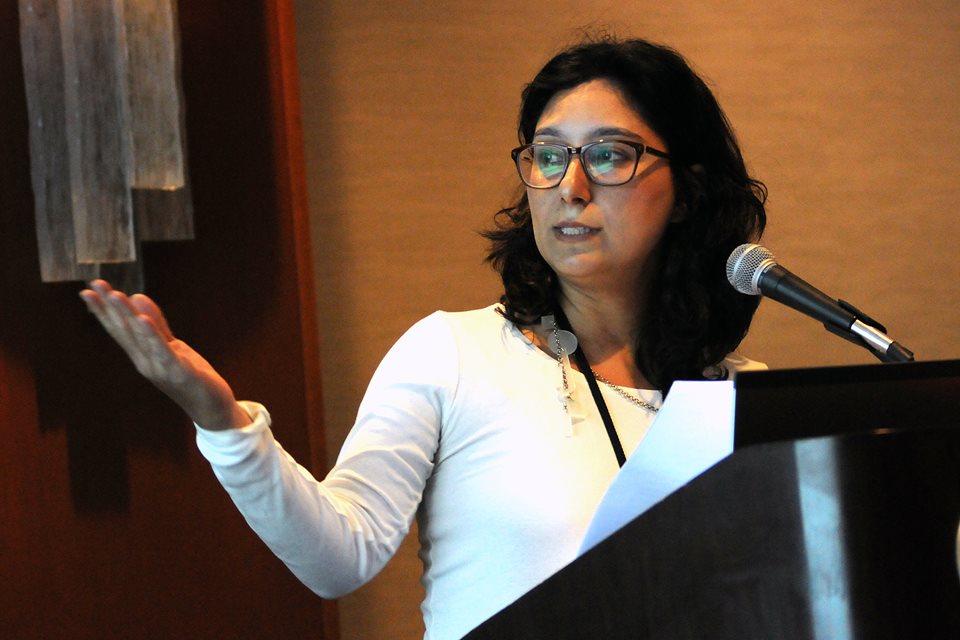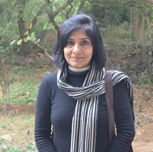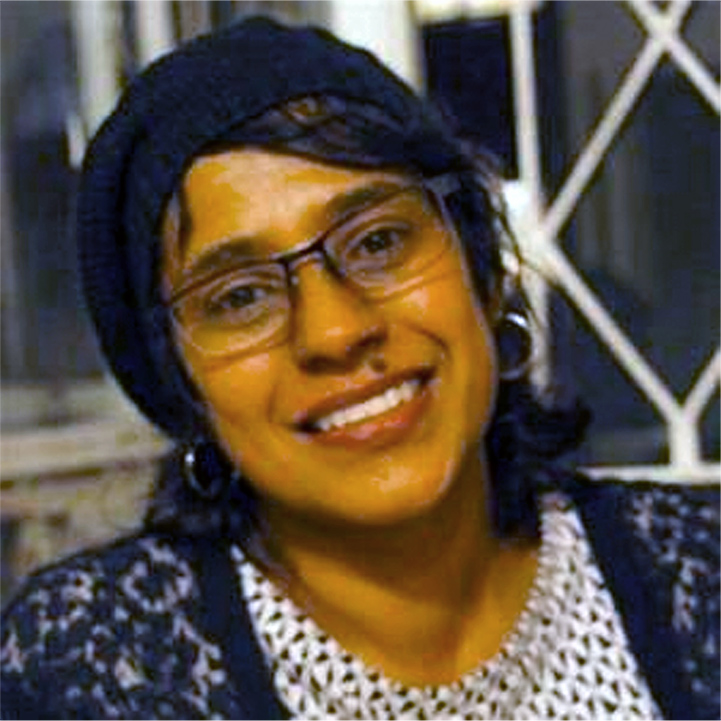Programs » Support and Travel Grants
2021 PARTICIPANTS IN THE CAA-GETTY INTERNATIONAL PROGRAM

Danielle Becker completed her master’s in art history at the University of Manchester (2010) and her PhD at the University of Cape Town (2017). She has lectured at the University of Cape Town, Stellenbosch University, Stellenbosch Academy, and a number of other institutions since 2010. She is currently a research fellow at Stellenbosch University. Her work engages in art historiography and concerns around the decolonization of South African and African art history as a discipline.

Federico Freschi (BAFA and PhD, University of the Witwatersrand), is professor and head of college of Te Maru Pūmanawa/Creative Practice and Enterprise at the Otago Polytechnic, Dunedin, New Zealand, and was formerly executive dean, Faculty of Art, Design and Architecture, University of Johannesburg, South Africa. His research focuses on the intersections of identity, politics, and imaginaries of belonging in art, design, and architecture. Widely published, Freschi has curated several exhibitions, notably as the South African curator of the first exhibition of Henri Matisse’s work on the African continent. He is currently coediting a book entitled The Politics of Design: Privilege and Prejudice in Aotearoa New Zealand, Australia, and South Africa (Otago Polytechnic Ltd. Press, 2021). He was formerly a vice president of the Comité International d’Histoire de l’Art (CIHA) and continues to serve on numerous professional associations. In addition to his academic career, Freschi is an accomplished baritone who continues to perform on the concert and opera stage.

Georgina G. Gluzman is a tenured researcher at the National Scientific and Technical Research Council (CONICET) in Argentina. She received her PhD in art history from the Universidad de Buenos Aires in 2015, having previously received an undergraduate degree in art history at the same university. Gluzman’s work focuses on the art of nineteenth- and early twentieth-century Argentine women artists. Her research has been supported by the Getty Foundation and the Institut national d’histoire de l’art. She is the author of Trazos invisibles: Mujeres artistas en Buenos Aires (1890–1923), published in 2016.

Richard Gregor is the director of the Peter Michal Bohúň Gallery in Liptov, Slovakia. A historian, curator, and art critic who studied at the University of Trnava, Slovak Republic, and Charles University in Prague, he worked as chief curator at Nitra Gallery and Bratislava City Gallery and served as a consultant at the Ministry of Culture of the Slovak Republic. Founder of the journals Dart (1999) and Jazdec/Rider (2009), in 2013 he served as the vice president of the Slovak Section of the International Association of Art Critics (AICA) and coauthored and co-organized the XLVI AICA International Congress in Slovakia. Gregor has curated more than thirty exhibitions at home and abroad, and has received grants to conduct research in the United States, Austria, the United Kingdom, Denmark, Germany, and Israel. His book Haberernová’s Eye: Post-Informal Figuration in Slovak Visual Art of the 1960s was published in 2013. Between 2014 and 2016, Gregor worked as the director and chief curator at Dom umenia/Kunsthalle Bratislava.

Alison Kearney is a Johannesburg-based artist and scholar of South African art who lectures on art education in the School of Education at the University of the Witwatersrand (Wits). She obtained her PhD, with a dissertation titled “Beyond the Readymade: Found Objects in Contemporary South African Art,” from Wits in 2016. She completed her master’s degree in fine art (with distinction) from the same university in 2004. Through her research Kearney interrogates the continuities and ruptures between African and Western art practices by critically exploring the ways in which Western avant-garde art practices and their attendant theories have informed contemporary African art. Kearney’s artworks have been featured in numerous exhibitions in South Africa, Switzerland, and Australia. She has published scholarly work on contemporary South African art and develops educational materials that facilitate particular engagements with art for the Wits Art Museum.

Sandra Križić Roban is a critic, curator, lecturer, PhD supervisor, and writer; a senior research advisor at the Institute of Art History in Zagreb; and the lead investigator on the scholarly project Ekspozicija: Themes and Aspects of Croatian Photography from the Nineteenth Century until Today (2020–24), funded by the Croatian Science Foundation. She received her PhD from the University of Zagreb. Her research topics include contemporary art, history and theory of photography, postwar architecture, and contemporary war memorials in Croatia. As head of the Office for Photography, established in 2013 as a nonprofit association dedicated to contemporary photography, she is responsible for the program of Gallery Spot, publishing, and national and international research projects. Križić Roban has published several books, comprehensive book chapters, scholarly papers, and catalogue essays, and she has hosted a number of retrospective exhibitions, as well as extensive thematic exhibitions, both in Croatia and abroad.

Peju Layiwola is an artist and a professor of art history, Department of Creative Arts, University of Lagos, Nigeria. Through her writing and multimedia works, Layiwola has addressed the tragic impact of the British Expedition to Benin, Nigeria, in 1897. Her focus on memory, Benin art and culture, and female participation in the visual arts in Nigeria has led to several articles in edited volumes such as Benin Kings and Rituals: Court Arts from Nigeria (2007) and Writing African Women: Gender, Popular Culture and Literature in West Africa (1997), and in N.Paradoxa, an international feminist journal (2013). Layiwola’s art has featured in several exhibitions within and outside Nigeria, including Benin1897.com: Art and the Restitution Question (University of Lagos, 2010), Whose Centenary? (Benin City, 2014), and the traveling exhibition Boundary Object organized by Artefakte, Berlin (Dresden and Madrid, 2015–16). She is currently head of the Department of Creative Arts, University of Lagos.

Daniela Lucena holds a PhD in social sciences from the University of Buenos Aires (UBA) and specializes in the sociology of art and culture. A researcher at the National Scientific and Technical Research Council (CONICET) in Buenos Aires, she teaches sociology of art courses at UBA, where she is also head of a research team. Since 2003 she has studied aesthetic projects in which art, culture, and politics are intertwined. Her books include Contaminación artística: Arte concreto, comunismo y peronismo en los años 40 (Artistic contamination: Concrete avant-garde, communism, and Peronism in the 1940s, Biblios, 2015) and Modo mata moda: Arte, cuerpo y (micro)política en los 80 (Form kills fashion: Art, body and [micro]politics in the 1980s), coauthored with Gisela Laboureau (EDULP, 2016). In addition to her work as researcher, she has collaborated since 2007 with PH15, a foundation that organizes photography workshops for children of vulnerable populations, assessing programs and community work linked to art.

Priya Maholay-Jaradi is the founding convenor of a new art history academic program, a collaboration between the National University of Singapore (NUS) and the National Gallery Singapore. She earned an MA in art history from the School of Oriental and African Studies, London (2001), a PhD from NUS (2012), and a postdoctoral fellowship at the International Institute for Asian Studies, Leiden (2013). Jaradi served as an assistant curator (South Asia) at the Asian Civilizations Museum, Singapore (2005-2007). Her curatorial projects include Portrait of a Community (National Gallery of Modern Art, Mumbai, 2002), Beauty in Asia (Asian Civilizations Museum, Singapore, 2007) and Tautology of Memory (NUS Museum, Singapore, 2012). Jaradi’s monograph Fashioning a National Art: Baroda’s Royal Collection and Institutions (1875–1924) (Oxford University Press, 2016), mobilizes provincial archives to reveal links between princely modernities and nationalisms in South Asia. She is the volume editor of Baroda: A Cosmopolitan Provenance in Transition (Marg Foundation, 2015). Her current research examines India-Singapore museological imaginations within the context of Cold War diplomacy, the Non-Aligned Movement, and decolonization.

Ana Mannarino is an art historian and a professor of art history in the School of Fine Arts and the Visual Arts Postgraduate Program at the Federal University of Rio de Janeiro, where she received her PhD in history of arts and visual arts. She participated in a yearlong collaborative study program at Université Sorbonne Nouvelle - Paris 3. Her research focuses on the relationship between text and image in Brazilian contemporary art and also considers the connections between art and poetry in Brazil, Concrete and Neoconcrete art, and the production of artists’ books.

Parul Dave Mukherji is a professor at the School of Arts and Aesthetics, Jawaharlal Nehru University, New Delhi, India. She holds a PhD from Oxford University. Recent publications include articles in Democratic Culture: Historical and Philosophical Essays (Routledge, 2011), Art History in the Wake of the Global Turn (Sterling and Francine Clark Art Institute, 2014), and The Art Bulletin (June 2014). Dave Mukherji coedited InFlux: Contemporary Art in Asia (Sage, 2013) and the Association of Social Anthropologists (ASA) volume Arts and Aesthetics in a Globalizing World (Bloomsbury Academic, 2014). She is the recipient of a number of awards and fellowships, including the British Academy award (2011); a Baden-Württemberg Fellowship, South Asia Institute, Heidelberg University, Germany (2013); a Clark Art Institute Fellowship, Williamstown, Massachusetts (2014); and a Kunsthistorische Institut Fellowship, Florence (2016). She participated in the CAA-Getty International Program in 2013.

Cristian Nae is an associate professor at George Enescu National University of the Arts in Iasi, Romania, where he teaches critical theory, exhibition studies, art historical methodologies, and contemporary art history. His research focuses on exhibition studies and contemporary art history and theory in Central and Eastern Europe after the 1960s. He has received research grants and fellowships from the Erste Foundation, Vienna; the Getty Foundation, Los Angeles; the New Europe College Institute for Advanced Studies, Bucharest; and CNCS-UEFISCDI (Romanian National Research Council). An active writer of art criticism, Nae is currently the vice president of the Romanian section of the International Association of Art Critics (AICA). His studies have appeared in journals and books published by Routledge, Wiley-Blackwell, de Gruyter, Hatje Cantz, and Peter Lang Verlag, among others.

Márton Orosz is the curator of the collection of photography and media arts at the Museum of Fine Arts–Hungarian National Gallery in Budapest, where he also directs the Vasarely Museum affiliated with the museum. There, over the last decade he has curated a handful of exhibitions. He earned his PhD in art history at the Eötvös Loránd University in Budapest. During his studies he was Terra Fellow at the Smithsonian American Art Museum in Washington, DC, a György Kepes Fellow for Advanced Studies and Transdisciplinary Research at the Massachusetts Institute of Technology, a Forum Transregionale Studien/Institute for Cultural Inquiry Post-Doctoral Fellow in Berlin, a Centre for Contemporary Art Curator-in-Residence in Singapore, and a Getty Research Institute grantee in Los Angeles. He has lectured widely across Europe, the United States, and Asia. His publications range in fields from photography, avant-garde collectorship, and abstract geometric and kinetic art to motion pictures and animated film.

Ceren Özpınar is currently a British Academy Newton International Fellow in the Department of Art History at the University of Sussex, England. She received a PhD in the history of art from Istanbul Technical University in 2015. Her thesis, Art Historiography in Turkey, published by the History Foundation Yurt Publishers in 2016, presents a critical analysis of histories of modern and contemporary Turkish art from 1970 to 2010. Her postdoctoral research builds on her PhD and provides both a critical approach and a new narrative for feminist art and its histories in Turkey. Özpınar was a research fellow at the University of Leeds during the 2013–14 academic year. Her teaching interests have focused on questions of feminism, nationalism, and discourse in art, as well as histories of modern and contemporary art in the Middle East and North Africa.

Dasha Panaiotti is a photography curator and research associate in the Contemporary Art Department of the State Hermitage Museum, St. Petersburg, Russia. She graduated with honors from the European University in St. Petersburg, where she is currently completing her PhD with a dissertation on the history of Soviet documentary photography in the Brezhnev era. She is also a member of the program committee of the “After Post-Photography” international conference, the only annual conference on photographic theory and history in Russia. Previously she was involved in the project In Support of Photography in Russia, funded by the IRIS Foundation, Moscow, where she was a member of the curatorial team that organized exhibitions of Russian photography for FotoFest 2012—an international photography festival held every two years in Houston, Texas—and where she also participated in an international portfolio review for Russian photographers at the Garage Center for Contemporary Culture in Moscow in 2011.

Valeria Paz Moscoso specializes in modern and contemporary Bolivian art history. She is the academic coordinator and advisor in the Department of Culture at the Universidad Católica Boliviana (La Paz), where she is also a temporary lecturer and editor of the journal Ciencia y Cultura (Science and culture). Her PhD dissertation examined the concept of repression and emancipation in the work of the Bolivian artist Roberto Valcárcel. Currently, she is researching the disruption of the narrative of Indigenism in contemporary art. Additional research interests include gender, humor, critical theory, postcolonial studies, and arts-based research. She has curated exhibitions in Bolivia and the United Kingdom, and published in journals such as ESCALA Research Papers, Ciencia y Cultura, Bisagra (Hinge), Terremoto (Earthquake), and in the books Corrosión y Anomalía: Escenas del arte contemporáneo boliviano (Corrosion and anomaly: Scenes from contemporary Bolivian art, 2019) and Bolivia: Los caminos de la escultura (Bolivia: The paths of sculpture, 2009), a publication selected for the Bicentennial Library of Bolivia.

Judy Peter, a professor, an art historian, and a curator, is the director of strategic initiatives and partnerships at the Cape Peninsula University of Technology in Cape Town, South Africa. She has published in the areas of gender studies, postcolonial studies, and cultural studies in national and international journals and has presented academic papers both nationally and internationally. She has also curated student jewelry exhibitions in South Africa, London, and New York. Between 2012 and 2021, Peter, along with colleagues (and CAA-Getty alumni) from South Africa and Romania, conceptualized the collaborative research project Between Democracies 1989–2014: Remembering, Narrating and Reimagining the Past in Eastern and Central Europe and Southern Africa (EESA). She was a member of the 2020 conference committee of the Association of International Education Administrators and of the 2019–20 Diversity Abroad Race and Ethnicity Task Force. She has chaired and participated in numerous panels at the meetings of the Asia Pacific Association of International Educators, the Diversity Conference, and the African Studies Association.

Horacio Ramos Cerna is a PhD candidate in art history at the Graduate Center, City University of New York, who specializes in Latin American art. He has been awarded the Patricia Phelps de Cisneros Research Fellowship for Latin American Art (2018), the Andrew W. Mellon Curatorial Fellowship to work at El Museo del Barrio (2017), and two grants from the College Art Association and the Getty Foundation in 2016 and 2021. Ramos has worked as research and curatorial assistant for exhibitions at El Museo del Barrio and the Museo de Arte de Lima. Currently, he teaches art history at Brooklyn College, City College, and Lehman College. He received his BA in philosophy and his MA in art history at the Pontificia Universidad Católica del Perú.

Nora Veszpremi is a research associate for the European Research Council–funded project Continuity/Rupture: Art and Architecture in Central Europe 1918–1939 at Masaryk University, Brno, Czech Republic. She is also an honorary research fellow at the University of Birmingham, UK, where she recently completed a project on museums in Austria-Hungary 1867–1918. In 2014–15 she taught at the Institute of Art History at Eötvös Loránd University, Budapest, Hungary, where she also received her PhD in 2013. Veszprémi specializes in nineteenth- and early twentieth-century Central European art. A former curator at the Hungarian National Gallery, she is the author of a monograph on romanticism and popular taste in mid-nineteenth-century Hungary (in Hungarian) and coauthor (with Matthew Rampley and Markian Prokopovych) of two volumes on museums in Austria-Hungary: The Museum Age in Austria-Hungary: Art and Empire in the Long Nineteenth Century (Penn State University Press, 2021); and Liberalism, Nationalism and Design Reform in the Habsburg Empire: Museums of Design, Industry and the Applied Arts (Routledge, 2020).

Giuliana Vidarte received a BA in Latin American literature and an MA in art history from the Pontificia Universidad Católica del Perú. In 2013 she was part of a curatorial intensive course in Northern Ireland organized by the New York–based Independent Curators International. In 2014 she received a travel grant to participate in the annual meeting of the International Committee for Museums and Collections of Modern Art (CIMAM) in Qatar. From 2015 to 2018, she was the curator of Bufeo: Amazonía+Arte, a project for the research and dissemination of Amazonian art. Vidarte has developed exhibition projects about the relationship between visual arts and literature, the rewriting of history based on the recovery of unofficial discourses, and artistic production in the Peruvian Amazon. She served as curatorial assistant for the Peruvian pavilion at the 58th Venice Biennale in 2019. Currently, she is chief curator and head of exhibitions at the Museo de Arte Contemporáneo in Lima.



